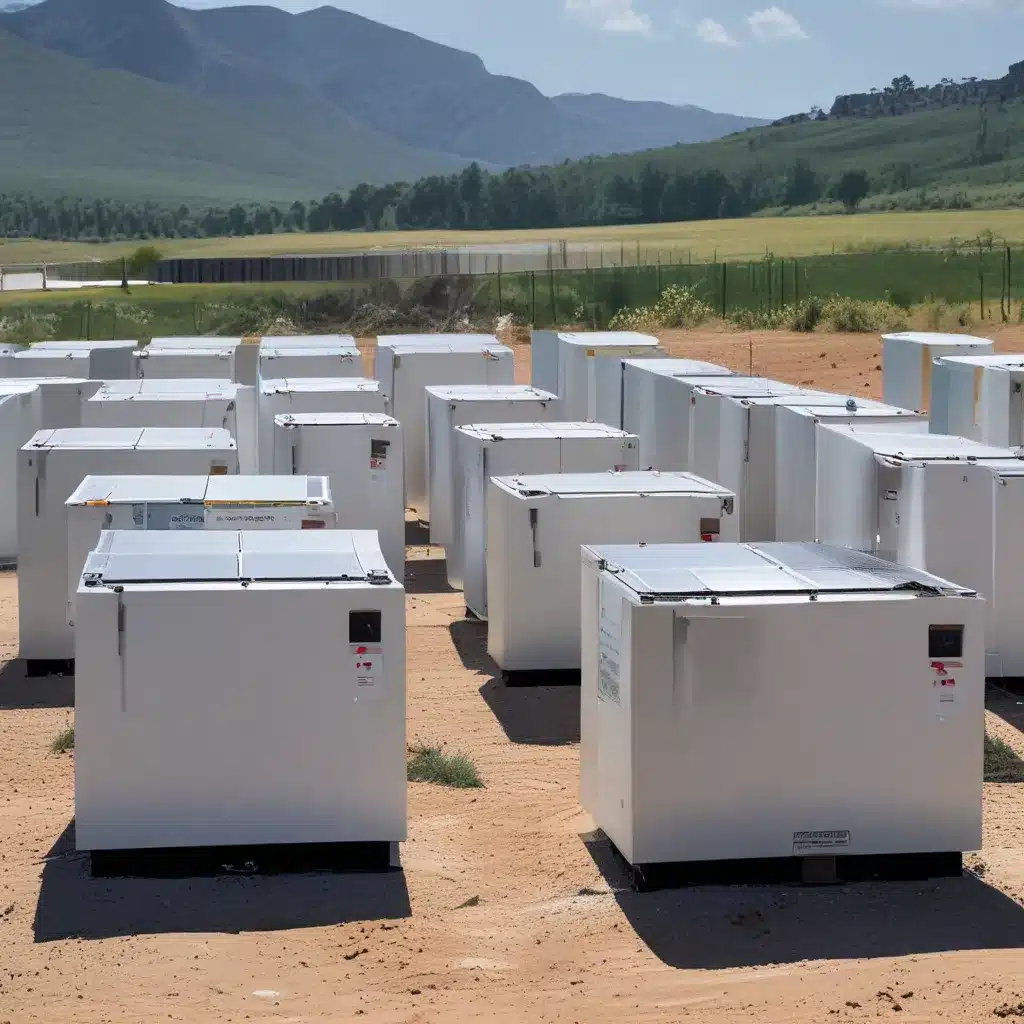
Unleashing the True Potential of Solar Energy
You know, when I first got into solar energy, I felt like I was stepping into a whole new world. It’s not just about slapping some panels on your roof and calling it a day. Oh no, my friend – there’s a whole symphony of moving parts that come together to create true energy independence. And at the heart of it all? Battery storage.
Think about it this way: your solar panels are like the lead vocalist, belting out those sweet, sweet watts of electricity. But without a reliable backup band (aka your battery storage system), those tunes can’t really shine to their full potential. It’s all about finding that perfect harmony, you know?
Residential solar panels rely on these solar power battery storage systems to capture and store that excess energy generated during the day. Because let’s face it, the sun doesn’t always shine when we need it the most. With a killer battery setup, you can keep the party going even when the lights go out.
The Harmony of Solar and Storage
Now, I know what you’re thinking: “But wait, doesn’t solar already make me independent from the grid?” Well, yes and no. Sure, those panels are churning out the juice, but what happens when the sun dips below the horizon? Or when a freak storm rolls through and knocks out the power? That’s where the battery storage comes in to save the day.
Integrating battery energy storage systems with your solar setup is the key to true grid independence. It’s like having a backup generator that’s powered by the sun itself. When the panels are cranking, the batteries soak up that excess energy, and when the grid goes down, the batteries step up to keep the lights on.
It’s a beautiful dance, really. The solar panels do their thing, the batteries hold the rhythm, and you get to sit back and enjoy the show – all while sticking it to the utility company. Because let’s be honest, who wants to be at the mercy of the grid, with its unpredictable outages and sky-high prices?
The Nuts and Bolts of Solar Storage
Alright, now that you’re sold on the idea of solar plus storage, let’s dive into the nitty-gritty. What exactly are we talking about when it comes to solar battery storage systems?
Well, the most common type is the good ol’ lithium-ion battery. You know, the same stuff that powers your smartphone and laptop. These bad boys can store a decent amount of energy and deliver it when you need it most. But they’re not the only players in the game.
There’s also thermal energy storage, where heat is used to generate electricity. And don’t forget about flywheels and compressed air storage – they may not be as flashy, but they’ve got their own unique advantages.
The key is finding the right storage solution that fits your needs. Do you need something that can deliver a quick burst of power, or are you looking for long-term, steady-state performance? How much energy do you need to store, and how much space do you have to work with? These are the kinds of questions you’ll need to answer to get the perfect battery setup.
Calculating the Perfect Fit
Okay, so you’re convinced that solar plus storage is the way to go. But how do you figure out the right size and type of battery system for your needs? Well, my friend, it’s all about doing your homework.
First, you’ll want to take a good, hard look at your energy consumption patterns. How much power do you use on a daily basis? When do you use it the most? Knowing these kinds of details will help you determine the right energy and power capacities for your storage system.
Next, you’ll need to consider the, ahem, “unique” weather conditions in your area. Let’s face it, not every part of the country is blessed with the same sunny skies. If you live in a region with frequent cloudy days or extreme weather events, you’ll need a beefier storage system to keep the juice flowing.
And let’s not forget about the budget. Batteries can cost anywhere from $200 to $500 per kilowatt-hour, so you’ll need to factor that into your solar panel installation costs. But don’t worry, the federal tax credit can help offset those expenses.
The Road to True Grid Independence
Alright, so you’ve got your solar panels, your battery storage system, and a plan to make the most of that glorious sunshine. But what does it all mean, really? Well, my friend, it means you’re well on your way to achieving true grid independence.
Gone are the days of being at the mercy of the utility company and their unpredictable outages and skyrocketing prices. With a robust solar and storage setup, you can bid farewell to those frustrating blackouts and say hello to reliable, sustainable power.
And let’s not forget the environmental benefits, too. By harnessing the power of the sun and storing it for later use, you’re doing your part to reduce your carbon footprint and combat the ongoing climate crisis. It’s a win-win for you and the planet.
So, what are you waiting for? It’s time to take control of your energy future and embrace the power of solar and storage. Trust me, your wallet and the environment will thank you.


